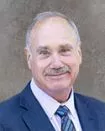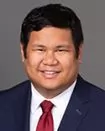In Abbott Laboratories v. Grifols Diagnostic Solutions Inc., No. 19 C 6587, 2020 WL 7042891 (N.D. Ill, Dec. 1, 2020), the U.S. District Court for the Northern District of Illinois opined as to patent-eligible subject matter in the context of a biological invention.
Background on Patent-Eligible Subject Matter
For background, as constantly cited in the ongoing debate regarding patent-eligible subject matter, "whoever invents or discovers any new and useful process, machine, manufacture, or composition of matter, or any new and useful improvement thereof," 35 U.S.C. § 101, may obtain a patent thereon. But, despite the statutory language (and the language in the power the people grant to Congress in Article I, Section 8, Clause 8 of the U.S. Constitution), e.g., "or discovers," the Supreme Court of the United States has carved out a number of judicial exceptions to the provisions of Section 101, namely laws of nature, natural phenomenon and abstract ideas, which are not patent-eligible subject matter. See Mayo Collaborative Servs. v. Prometheus Lab'ys, Inc., 566 U.S. 66, 70 (2012). Although laws of nature and natural phenomenon are discoverable, the Supreme Court is of the view that no patent can issue on their discovery because the "manifestations of laws of nature" are "part of the storehouse of knowledge," "free to all men and reserved exclusively to none." See Funk Bros. Seed Co. v. Kalo Inoculant Co., 333 U.S. 127, 130 (1948); see also MPEP § 2106.04. However, an invention is not per se patent-ineligible because the claimed subject matter involves one of the judicial exceptions. See Alice Corp. Pty. Ltd. v. CLS Bank Int'l, 573 U.S. 208, 217 (2014) (indicating that all inventions, at some level, apply laws of nature, natural phenomena, or abstract concepts, which does not render them patent-ineligible); see also 2019 Revised Patent Subject Matter Eligibility Guidance, 84 Fed. Reg. 50, 53 (Jan. 7, 2019).
Alice and Mayo established a two-part test to determine the patent-eligibility of claims reciting a judicial exception. Step 1 involves determining whether the claimed subject matter falls within the four statutory categories of patentable subject matter identified by 35 U.S.C. § 101. The analysis then proceeds to Step 2A, which involves a two-prong analysis as described in the 2019 Revised Patent Subject Matter Eligibility Guidance. Prong one involves determining whether the claim recites a judicial exception. If the answer is no, the claim is directed to patent-eligible subject matter and ends the eligibility analysis. But if the answer is yes, the analysis proceeds to the second prong, which evaluates whether the judicial exception is integrated into a practical application such as recitation of additional elements using a judicial exception to effect a particular treatment. The analysis then proceeds to Step 2B, which evaluates whether the claims recite significantly more than the judicial exception to render the claims inventive. See generally 2019 Revised Patent Subject Matter Eligibility Guidance, 84 Fed. Reg. 50; U.S. Pat. & Trademark Off., October 2019 Update: Subject Matter Eligibility.
Much of the debate regarding patent-eligible subject matter in biotechnology involves the natural phenomenon or law of nature judicial exceptions. The Federal Circuit has consistently held claims reciting diagnostic or detection methods patent-ineligible because the claims are merely directed to the observation of the natural phenomenon or laws of nature. See, e.g., Roche Molecular Sys. Inc. v. CEPHEID, 905 F.3d 1363, 1371-72 (Fed. Cir. 2019) (holding claims drawn to detecting Mycobacterium tuberculosis based on the appearance of 11 naturally occurring position-specific signature nucleotides in biological samples drawn to natural phenomenon and patent-ineligible); Genetic Techs. Ltd. v. Merial L.L.C., 818 F.3d 1369, 1372-76 (Fed. Cir. 2016) (holding claims drawn to detection of alleles drawn to a particular gene via amplifying and analyzing noncoding regions directed to law of nature and patent-ineligible); Ariosa Diagnostics, Inc. v. Sequenom, Inc., 788 F.3d 1371, 1376-78 (Fed. Cir. 2015) (finding claims drawn to the detection of cell-free fetal DNA in maternal plasma directed to a natural phenomenon and patent-ineligible).
In contrast, the Federal Circuit has held certain claims directed to methods of preparation or production to be patent-eligible at the first prong of Step 2A because the claims at issue were not directed to a judicial exception. See Illumina, Inc. v. Ariosa Diagnostics, Inc., 967 F.3d 1319, 1326-29 (Fed. Cir. 2020) (finding methods for preparing a fraction of cell-free DNA enriched in fetal DNA not directed to a natural phenomenon and patent-eligible) (emphasis added); Rapid Litig. Mgmt. Ltd. v. CellzDirect, Inc., 827 F.3d 1042, 1048, 1050 (Fed. Cir. 2016) (holding method claims directed to method of preserving cells that could survive multiple free-thaw cycles patent eligible because the claims were not directed to the observation or detection of said process) (emphasis added).
Abbott Laboratories and Natural Phenomena
Abbott Laboratories presents another situation in which the law of nature and natural phenomenon judicial exceptions have come to the forefront in the analysis of patent-eligible subject matter.
The patent at issue in Abbott Laboratories, U.S. Patent No. 7,205,101 ('101 Patent), and specifically claim 7 thereof, is directed to a method for replicating DNA specific for HIV. Abbott Laboratories brought a declaratory judgment action against Grifols Diagnostic Solutions Inc. and other joint owners of the patent, asserting that the claims of the '101 Patent were invalid, including asserting that the '101 Patent claims fail to comply with 35 U.S.C. § 101 due to claiming patent-ineligible subject matter. Grifols asserted a counterclaim against Abbott, alleging that Abbott infringed claim 7 of the '101 Patent. Abbott sought to dismiss the infringement matter on the basis that claim 7 of the '101 Patent is invalid under 35 U.S.C. § 101 being directed to patent-ineligible subject matter.
Claim 7 of the '101 Patent is drawn to a two-step method for replicating HIV-specific DNA that aims to solve a number of problems relating to processes of replicating HIV DNA, such as reducing the risk that workers handling HIV could become infected with the virus. The claim is reproduced below in an edited form to include the limitations of independent claim 1 from which it depends:
A method for replicating DNA specific for HIV, which comprises:
(a) providing a DNA construct comprising an origin of replication recognized by a unicellular microorganism and a DNA sequence comprising at least a 20 bp sequence of a human immunodeficiency virus (HIV) genome; and
(b) growing a unicellular microorganism containing said DNA construct under conditions whereby said DNA sequence is replicated.
wherein the unicellular microorganism is a bacterial cell.
Abbott raised two arguments against the '101 Patent: (1) the '101 Patent is directed to a product of nature, the HIV DNA strain, and (2) claim 7 is directed to the replication of HIV DNA, a natural phenomenon, thus rendering the claim patent-ineligible.
In rejecting Abbott's product of nature argument, the court focused on the language of claim 7, indicating that there is no claim to any particular HIV DNA sequence and only the recitation of a two-step method for replicating HIV-specific DNA via use of a DNA construct in the first "providing" step and a unicellular bacterial cell in the second "growing" step.
With respect to Abbott's natural phenomenon argument, the court emphasized an important difference between patent-ineligible claims merely directed to natural phenomenon versus patent-eligible claims whose subject matter may undergo a natural process. A claim is directed to a natural phenomenon when the nature of the claim amounts to mere observation of the natural phenomenon taking place, rendering the claim patent-ineligible. In other words, an application whose claims recite patent-ineligible natural phenomenon merely establishes the phenomenon's existence and invites the public to observe the natural process. In contrast, patent-eligible claims involving a natural phenomenon achieve more than just the mere observation of the natural phenomenon, such as claim 7 of the '101 Patent that provides a process for replicating HIV DNA. The court analogized the claim at issue to those claims at issue in IIlumina and CellzDirect, indicating that claim 7 was more akin to a patent-eligible method of preparation or production.
Thus, the court found that Abbott, in denying its motion to dismiss, did not demonstrate that claim 7 of the '101 Patent is directed to patent-ineligible subject matter, holding that claim 7, directed to a method of producing or replicating HIV DNA, was not drawn to a natural phenomenon, ending the Alice/Mayo inquiry at the first prong of revised Step 2A in favor of finding patent-eligible subject matter.
Conclusion and Analysis
Abbott Laboratories provides yet another example of the distinction between patent-eligible and patent-ineligible subject matter within biotechnology. It is becoming more apparent that claims involving the natural phenomenon or law of nature judicial exceptions can be patent-eligible when the claims are directed to something more than just the mere observation of the natural phenomenon or natural process taking place, such as providing a method for the production or replication of HIV DNA as in Abbott Laboratories.
Prior to filing a patent application, applicants should determine whether the invention amounts to mere observation of the natural phenomenon and where the scope of the claims would merely involve inviting the public to observe the natural process at work (albeit via analytical instruments or techniques) or whether the proposed subject matter amounts to more than the observation of the natural phenomenon. Subject matter falling into the category of mere observation of natural phenomenon are likely to face scrutiny under the Alice/Mayo inquiry and would likely face a rejection under Section 101 during prosecution for reciting patent-ineligible subject matter.
In other words, an applicant's claims that recite a natural phenomenon should not take the form of a "telescope," which merely invites the public to look through the eyepiece to gaze at and observe the natural phenomenon. In the patent context, claimed subject matter that amounts to nothing more than a telescope simply informs the public of the existence of a natural phenomenon and allows observation of the natural processes at work, for example, through a diagnostic technique involving the observation of natural, physiological processes. This subject matter would likely face a rejection under Section 101 during prosecution. Based on the holding of Abbott Laboratories and the ever-growing repertoire of biotechnology case law revolving around patent-eligible subject matter, applicants should be aware that the claims should contain additional elements using the judicial exception to amount to more than a public spectacle of nature at work, thus transforming the claimed subject matter into patent-eligible subject matter.
For More Information
If you have any questions about this Alert, please contact Thomas J. Kowalski, Deborah L. Lu, Ph.D., Brandon A. Chan, Ph.D., any of the attorneys in our Life Sciences and Medical Technologies Industry Group, any of the attorneys in our Intellectual Property Practice Group or the attorney in the firm with whom you are regularly in contact.
Disclaimer: This Alert has been prepared and published for informational purposes only and is not offered, nor should be construed, as legal advice. For more information, please see the firm's full disclaimer.


